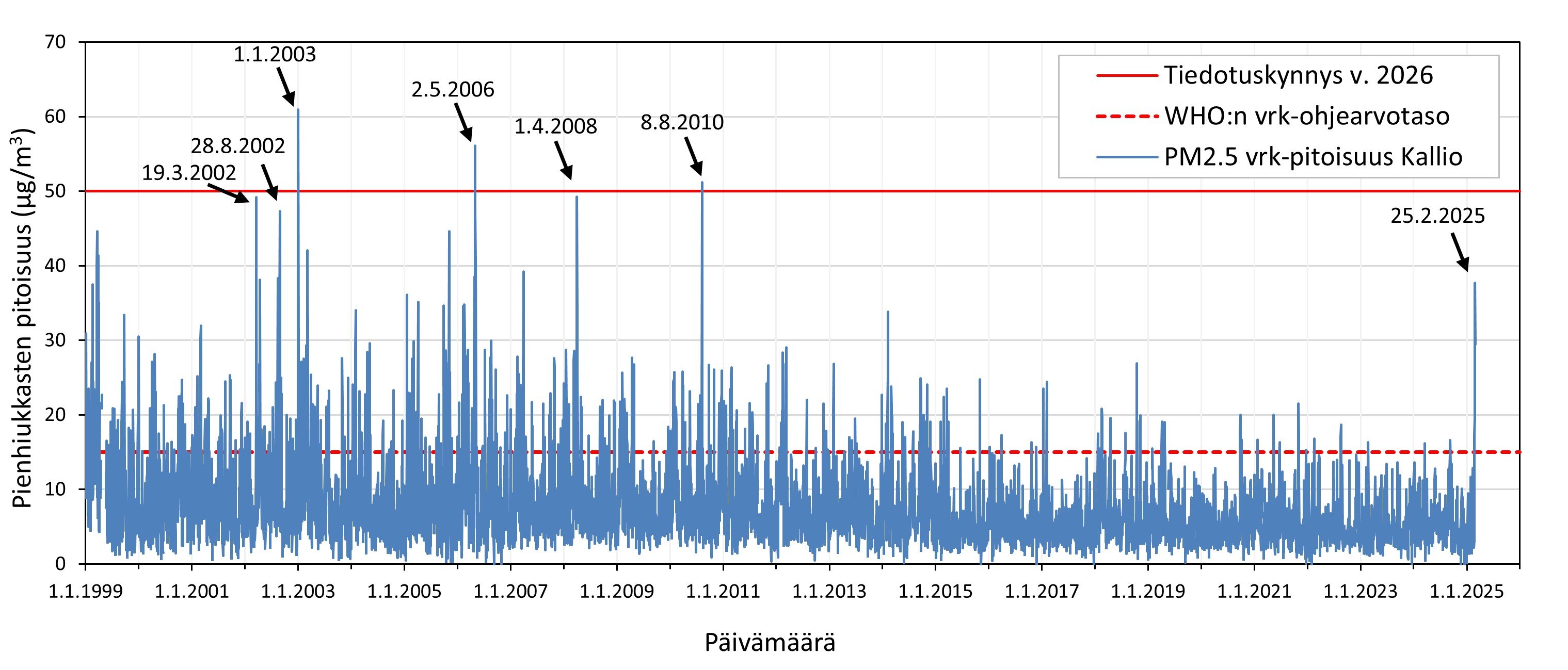Long-Range Transport of Fine Particles Has Ended in the Helsinki Metropolitan Area

This week, fine particles transported from Eastern and Central Europe significantly deteriorated air quality in the Helsinki metropolitan area. Now, according to HSY’s measurements, the amount of fine particles in the air is back to normal levels. However, in the coming days, street dust may still affect air quality depending on weather conditions.
In the Helsinki metropolitan area and in the rest of Uusimaa Region unusually high amounts of fine particles were measured over five days due to a widespread long-range transport from Eastern and Central Europe. The transported fine particles deteriorated air quality over a large area in Finland.
The amount of fine particles in the air in the Helsinki metropolitan area has decreased, and concentrations are back to normal levels according to HSY’s measurements. Today, Friday, February 28, air quality is good or satisfactory in the Helsinki metropolitan area and elsewhere in Uusimaa.
Fine Particle Concentrations Were Exceptionally High
The long-range transport caused the highest fine particle concentrations on Tuesday, February 25, when the daily average was about 40 micrograms per cubic meter of air (µg/m³) in the Helsinki metropolitan area. The concentration was about seven times higher than the normal level.
The World Health Organization’s (WHO) daily guideline level (15 µg/m³) was exceeded for five days from February 22 to 26 due to the long-range transport. Exceedances of WHO’s guideline level occur annually in the Helsinki metropolitan area, but this week the concentrations were exceptionally high.
The long-range transport of fine particles last caused higher daily concentrations in the Helsinki metropolitan area in the summer of 2010. At that time, forest fire smoke from Eastern Europe was transported to the Helsinki metropolitan area, and the daily concentration was over 50 µg/m³.
Long-Term Fine Particle Concentrations Have Decreased Significantly
Annual concentrations of fine particles have roughly halved during the 2000s in the Helsinki metropolitan area. The main reason for this is EU-wide emission reductions from common sources such as energy production, industry, and traffic. High concentrations of fine particles caused by long-range transport were measured much more frequently in the first decade of the 2000s, particularly due to forest fires and burn-clearing of fields, but also from other emission sources.
Street Dust Season Approaches
Although the long-range transport situation is over, air quality in the Helsinki metropolitan area may deteriorate in the coming days due to street dust that rises into the air as road surfaces dry out. On sunny and dry days, there is a lot of street dust in the air. Meltwater and rain, on the other hand, wet the road surfaces, which reduces dustiness.
More Information:
Air quality now in the Helsinki metropolitan area: Air quality - HSY
Air quality elsewhere in Uusimaa: Air quality Uusimaa - HSY
Information on the health effects of fine particles: Health effects of air pollutants - HSY
information on trends of air pollution: Trends in air pollutant concentrations - HSY

Daily average concentrations of fine particles (PM2.5) at the HSY measurement station in Kallio, Helsinki, from 1.1.1999 to 26.2.2025. The image shows the WHO daily guideline level (15 µg/m³) and the information threshold of the new air quality directive (50 µg/m³) , which will come into effect by the end of 2026. Particles transported from forest fires, field burning, and other emission sources in Eastern Europe caused high concentrations in 2002, 2006, 2008, and 2010. The highest daily average was due to local New Year’s fireworks in Kallio (1.1.2003). Image: HSY